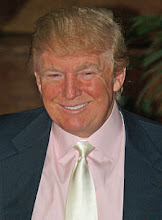By 1989, the effects of recession left Trump unable to meet loan payments. Trump financed the construction of his third casino, the $1 billion Taj Mahal, primarily with high-interest junk bonds. Although he shored up his businesses with additional loans and postponed interest payments, by 1991 increasing debt brought Trump to business bankruptcy[4] and the brink of personal bankruptcy. Banks and bond holders had lost hundreds of millions of dollars, but opted to restructure his debt to avoid the risk of losing more money in court. The Taj Mahal re-emerged from bankruptcy on October 5, 1991, with Trump ceding 50% ownership in the casino to the original bondholders in exchange for lowered interest rates on the debt and more time to pay it off.[12]
On November 2, 1992, the Trump Plaza Hotel was forced to file a prepackaged Chapter 11 Bankruptcy protection plan after being unable to make its debt payments. Under the plan, Trump agreed to give up a 49% stake in the luxury hotel to Citibank and five other lenders. In return Trump would receive more favorable terms on the remaining $550+ million owed to the lenders and retain his position as chief executive, though he would not be paid and would not have a role in day-to-day operations.[13]
By 1994, Trump had eliminated a large portion of his $900 million personal debt[14] and reduced significantly his nearly $3.5 billion in business debt. While he was forced to relinquish the Trump Shuttle (which he had bought in 1989), he managed to retain Trump Tower in New York City and control of his three casinos in Atlantic City. Chase Manhattan Bank, which lent Trump the money to buy the West Side yards, his biggest Manhattan parcel, forced the sale of a parcel to Asian developers. According to former members of the Trump Organization, Trump did not retain any ownership of the site's real estate - the owners merely promised to give him about 30 percent of the profits once the site was completely developed or sold. Until that time, the owners wanted to keep Trump on to do what he did best: build things. They gave him a modest construction fee and a management fee to oversee the development. The new owners also allowed him to put his name on the buildings that eventually rose on the yards because his well-known moniker allowed them to charge a premium for their condos.[15]
In 1995, he combined his casino holdings into the publicly held Trump Hotels & Casino Resorts. Wall Street drove its stock above $35 in 1996, but by 1998 it had fallen into single digits as the company remained profitless and struggled to pay just the interest on its nearly $3 billion in debt. Under such financial pressure, the properties were unable to make the improvements necessary for keeping up with their flashier competitors.
Finally, on October 21, 2004, Trump Hotels & Casino Resorts announced a restructuring of its debt.[16] The plan called for Trump's individual ownership to be reduced from 56 percent to 27 percent, with bondholders receiving stock in exchange for surrendering part of the debt. Since then, Trump Hotels has been forced to seek voluntary bankruptcy protection to stay afloat. After the company applied for Chapter 11 Protection in November 2004, Trump relinquished his CEO position but retained a role as Chairman of the Board. In May 2005[17] the company re-emerged from bankruptcy as Trump Entertainment Resorts Holdings.[18]



No comments:
Post a Comment